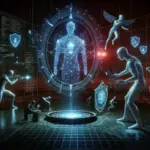
Month: July 2025
-
Price Leak Analysis for Asus ROG Ally Handheld
The excitement surrounding the Asus ROG Ally handheld gaming device has captured the attention of gamers worldwide. With its promising specifications and features, many enthusiasts are eager to know how much they will need to invest to get their hands on this device. This article will delve into the price leak analysis for the Asus…
-
What Heat Pipe Systems Accomplished for Laptop Cooling
In the world of laptops, effective cooling solutions are paramount. As technology advances and laptops become more powerful, the need for efficient heat management becomes increasingly critical. One of the standout innovations in this area is the heat pipe system. This article delves into what heat pipe systems have accomplished for laptop cooling, exploring their…
-
The Future is Here: Understanding Ambient Invisible Intelligence Deployment and Its Impact on Modern Society
In an era where technology continues to evolve at an unprecedented pace, ambient invisible intelligence has emerged as a groundbreaking concept that’s reshaping our interaction with the digital world. This sophisticated approach to computing and artificial intelligence operates silently in the background, creating seamless experiences that enhance our daily lives without visible intervention.
Popular Posts
- Cybercriminals Exploit X’s Grok AI Assistant in ‘Grokking’ Malvertising Technique to Bypass Ad ProtectionsThe landscape of cybersecurity is ever-evolving, with cybercriminals continually finding new ways to exploit vulnerabilities. One of the most concerning recent developments is the use of X’s Grok AI assistant in a malicious advertising technique known as ‘grokking.’ This innovative yet deceptive strategy has not only raised alarms among security professionals but has also highlighted the vulnerabilities inherent in our ad protection systems.
- Tesla’s Stock Erases Loss for the Year, Soaring 85% Since April LowIn a stunning reversal of fortunes, Tesla’s stock has not only recovered from its earlier losses this year, but it has also surged a remarkable 85% since hitting a low in April. This impressive rebound raises important questions about the factors driving investor confidence in the electric vehicle (EV) giant and what this could mean for its future as a market leader.
- Maximize Device Performance with UpdatesSoftware updates are crucial for maintaining and optimizing the performance of your devices. Whether you’re using a smartphone, laptop, or tablet, staying on top of updates can ensure your device runs smoothly and efficiently. From security patches to performance enhancements, updates help address bugs and introduce new features. In this lifehack, we’ll explore how regular updates can maximize device performance and why they should be a priority in your device maintenance routine.
Archives
- November 2025 (4)
- September 2025 (4)
- August 2025 (7)
- July 2025 (3)
- June 2025 (7)
- May 2025 (1)
- March 2025 (1)
- December 2024 (1)
- November 2024 (3)
- October 2024 (4)





